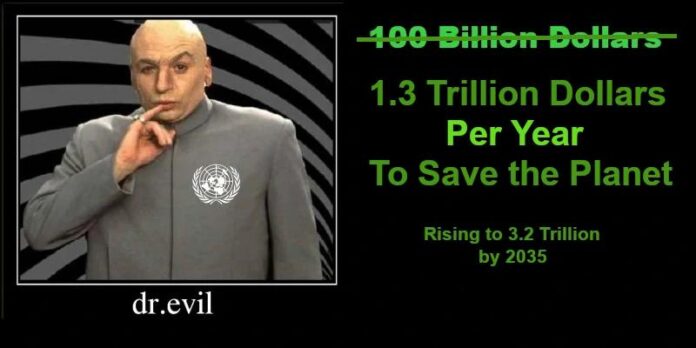Essay by Eric Worrall
If the climate cash doesn’t arrive on time, demand more money?
Brazil climate summit confronts gap between finance goals and reality
Soumya Sarkar
18 Nov 2025
- The aspirational climate finance target of $1.3 trillion annually by 2035 falls short of needs, with developing countries requiring $2.4 trillion by 2030, rising to $3.2 trillion by 2035, a new report shows.
- The loss and damage fund established to help vulnerable countries has received only $788 million in pledges, a fraction of what nations like Bangladesh and Pacific islands require.
- Current global climate finance flows total just $190 billion each year. Reaching the $1.3 trillion target would require a nearly sevenfold increase within a decade.
When world leaders gathered in Belém on November 10 for the annual climate summit (COP30), they faced what the host, Brazil, called the “COP of Implementation.” That phrase captures both aspiration and urgency. After decades of climate negotiations and 10 years since the landmark Paris Agreement was signed to limit global warming, the focus has shifted from promises to delivery, particularly in the area of finance. At the centre of discussions lies a number that sounds impressive yet falls troublingly short.
This aspirational target of $1.3 trillion each year represents a historic moment reached at last year’s summit. Developed countries have pledged $300 billion per year by 2035, known as the New Collective Quantified Goal, with the remainder expected from other sources, including emerging economies and private investors.
But a report released two days into the summit laid bare the gap between ambition and reality. Developing countries, excluding China, will require $2.4 trillion annually by 2030, rising to approximately $3.2 trillion by 2035, according to the Independent High-Level Expert Group on Climate Finance (IHLEG) of the London School of Economics, as calculated in its fourth report, published on November 12. The difference between the agreed-upon target and actual necessity could not be clearer.
“Getting to the target is feasible, but it is not easy,” said Amar Bhattacharya, Senior Fellow at the Brookings Institution and co-author of the IHLEG report. That understatement masks an enormous undertaking. Current climate finance flows to Emerging Markets and Developing economies or EMDEs (excluding China) total roughly $190 billion in 2022, according to the IHLEG report. Reaching even the $1.3 trillion mark would require nearly a sevenfold increase within a decade. Reaching what is actually needed demands even more.
…
Can’t you see these climate activists are doing it tough?
$1.3 trillion divided by say a hundred thousand activists is only $13,000,000 / year / activist. Barely enough to cover the air miles climate activists clock up while campaigning against flying.
I think the referenced report is available here, though there appear to have been some last minute multi-hundred billion dollar adjustments to the numbers. The rest of the quoted article is mostly a long complaint about how slowly the money is being delivered.
Discover more from Watts Up With That?
Subscribe to get the latest posts sent to your email.



